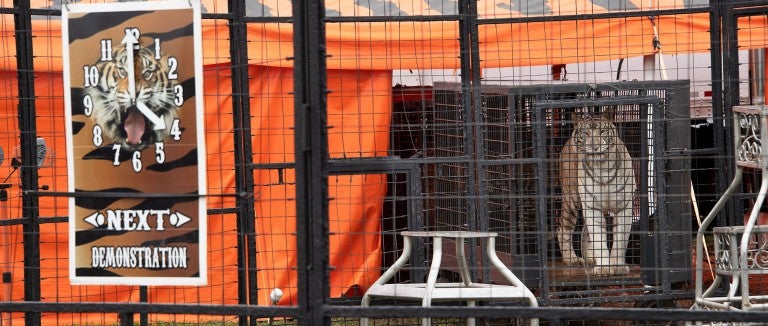Many animal lovers can point to specific childhood memories that ignited their love for animals. As a teacher, parent or caregiver, you probably want to replicate that experience for the children in your care. As someone who loves animals, you also want to make sure your fun excursion isn’t harming the animals you are admiring.
Use these tips to help find ethical and kid-friendly activities in your area. And remember, if you are unsure about whether an attraction is exploitative or ethical, it is best to err on the side of caution and avoid an activity entirely.
Avoid direct contact with wild animals
Although it may be tempting to let children interact with wild animals, these experiences are no fun for the animals involved. Animals used for direct interactions with the public—whether for photo opportunities, feeding by the public, rides or other activities—may be forced to have encounters with hundreds of people a day. Excited guests, especially children, may shout, poke or tease the animals, creating a stressful environment. Wild animals may also be deprived of food to make them hungry for public-feeding sessions, and many roadside facilities breed animals in captivity to produce as many cute babies as possible for the public to play with.
Facilities that allow people to directly interact with wild animals send the wrong message to children: that it is okay to subject animals to cruel conditions for human benefit.
Find reputable attractions that help animals truly in need
Wildlife rehabilitation facilities, rescue centers, accredited wildlife and farm animal sanctuaries can be great places to take children! Not only can you see a wide array of animals, but you can learn how these facilities help animals in need, from rehabilitating injured wildlife to rescuing individuals from the exotic pet trade. Children can see these animals in settings similar to the wild as they engage in species-appropriate behaviors.
One helpful resource for finding an ethical attraction is the Global Federation of Animal Sanctuaries, which lists accredited rescue centers, rehabilitation facilities and sanctuaries. These organizations adhere to strict standards of animal care, do not allow members of the public to have direct contact with wildlife, and do not commercially trade in animals or animal parts. If you want to visit a zoo, ensure the zoo is accredited by the Association of Zoos and Aquariums and skip any close encounters with wild animals that may be offered.
Local nature centers and parks may also have wild animals in their care and can be a great option to learn about rehabilitation and conservation efforts in your area. Some nature centers and ethical animal facilities even host birthday parties!
Consider some creative options
If there are no ethical organizations in your area, there are still plenty of ways to see animals firsthand—the easiest being to get out into nature. Make it more fun for kids by learning about native species and bringing binoculars to get an up-close look from far away. Some conservation nonprofits and parks offer guided walks where experts share insights about the plants and animals you observe.
Other options include visiting a cat café, where you can meet adoptable cats in your area. Good cat cafés have a private area for felines who are overwhelmed by visitors. If you are bringing a large group of kids, call ahead of time to plan accordingly with café staff: A large group of children, in addition to the other guests, could be overwhelming for the animals. Cat cafes present a great opportunity to teach kids how to calmly interact with cats; many cat cafes have rules visitors need to follow to help keep the cats happy. If you want to see cats and dogs, check whether your local animal shelter or rescue provides tours of their facility.
Get crafty
Children who want to help animals can do so by crafting everything from toad homes (we like to call them toad abodes!) for amphibians in your backyard to interactive toys for adoptable cats and dogs. Check with your local shelter or animal sanctuary to see what they need; many will have approved patterns to follow. When you’re done with your craft, you might even be able to see the animals using it firsthand: Ask whether the kids can drop off the toys in person and play with the animals. Or set up a wildlife camera in front of a toad abode or birdhouse to see if you get any visitors.
You can also host a fundraising event for your local organization by selling crafts and/or baked goods made by the children. Just contact the organization ahead of time to let them know about the event!
Feeling overwhelmed? Try these quick suggestions for an experience that will be fun for both children and animals!
- Instead of visiting a petting zoo, schedule a tour of a local animal sanctuary.
- Instead of throwing a birthday party with captive wild animals, host a party at a nature center.
- Instead of visiting a roadside attraction, visit a cat café.
Want more content like this?
This was written and produced by the team behind All Animals, our award-winning magazine. Each issue is packed with inspiring stories about how we are changing the world for animals together.
Learn MoreSubscribe
